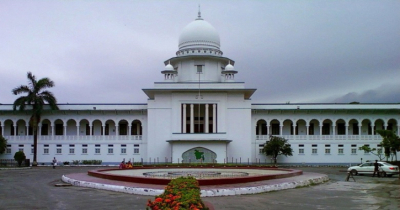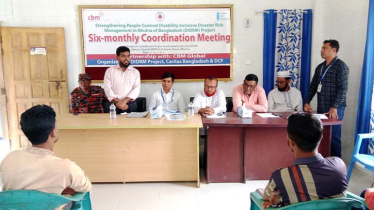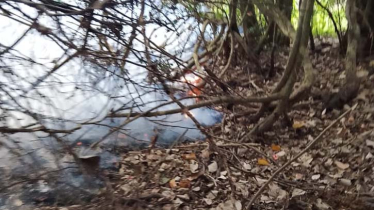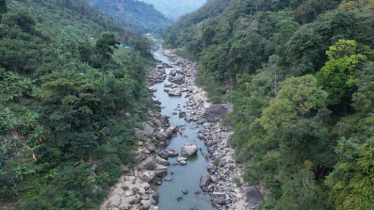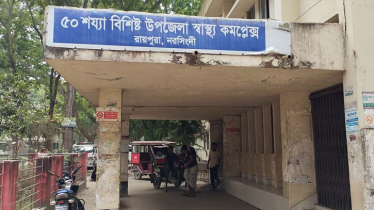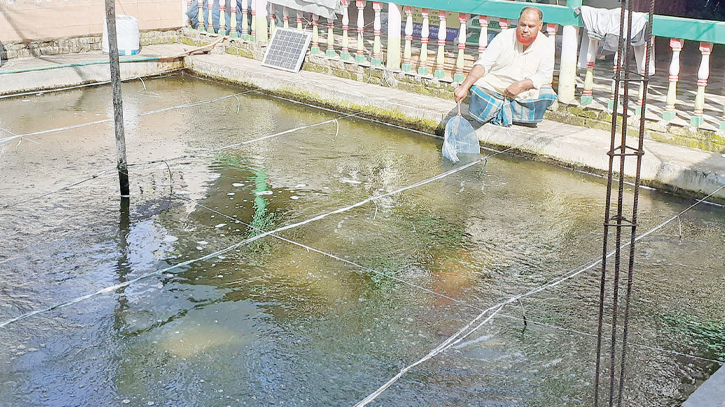
Photo : Messenger
Biofloc fish farming is gaining popularity among entrepreneurs in Kurigram, a district in the northern region of the country. This innovative aquaculture system involves recycling waste nutrients as fish food, utilizing specifically cultured microorganisms known as biofloc.
One success story in Kurigram features Abdul Momin, a 43-year-old Madrasha teacher from Khalisha Koilashkuthi village in Rajarhat upazila. Engaged in agricultural activities, Momin decided to venture into fish farming using biofloc technology on his house yard. In March 2021, he constructed a concrete ditch-house measuring 23 feet in length, 18 feet in width, and 4 feet in height.
The following month, Momin filled the ditch with water and introduced 600 grams of fry-fishes (Pona-machh) of Carfew, Silver-calf, and Hungeri varieties, purchased from a fish farm in Bogura Sadar upazila. Initially, the fry-fishes were fed with feed-powder and dust from boiled poultry eggs. After a month, they were transferred to another pond on ten decimals of land, where they continued to grow with proper feeding.
By June 2021, the fry-fishes had reached a length of 1.5 to 2 inches, and Momin sold them to local fish farmers for Tk 30,000, generating a profit after an initial expenditure of Tk 10,000. Inspired by YouTube videos and fish medicine sellers, Momin used medicines such as the anti-septic Micronil as needed.
In July 2021, he cleaned the ditch-house with potash, lime, and bleaching powder before releasing 10,000 fries of walking-fish (Koye machh) of Thailand Hybrid variety. These fishes were fed with granular feeds of various sizes according to their age, and timely medication was administered to protect them from diseases.
By October 2021, Momin harvested around nine maunds of fish, selling eight maunds for Tk 70,000. With an expenditure of Tk 40,000, he earned a profit of Tk 60,000 within six months. Notably, no additional labor was required for this farming.
In 2022, Momin experienced a bumper production of walking-fish by releasing fry-fishes in two terms. He sold 22 maunds of fish for Tk 1,85,000 with a total expenditure of Tk 85,000, resulting in a net profit of around Tk 1 lakh within six months. Encouraged by his success, Momin invested in an oxygen machine and plastic pipe for supplying oxygen into the water.
This year, he released 450 fry-fishes of Pangash variety, with an estimated maturation time of around ten months. Up to October, he had already spent about Tk 5,000 on this venture. Momin's success has attracted attention, with various individuals and officials, including Kurigram District Fishery Officer Kalipado Roy and Rajarhat Upazila Fishery Officer Ariful Alam, visiting his fish farming technology.
Momin emphasizes the importance of acquiring sufficient knowledge on biofloc technology, including fry-fish selection, managing oxygen levels in water, and monitoring parameters such as Ammonium, PH, and TDS.
Rajarhat Upazila Fishery Officer Ariful Alam supports this sentiment, advising local people to explore various fish farming technologies, including biofloc.
Messenger/Rabbani/Shahin

